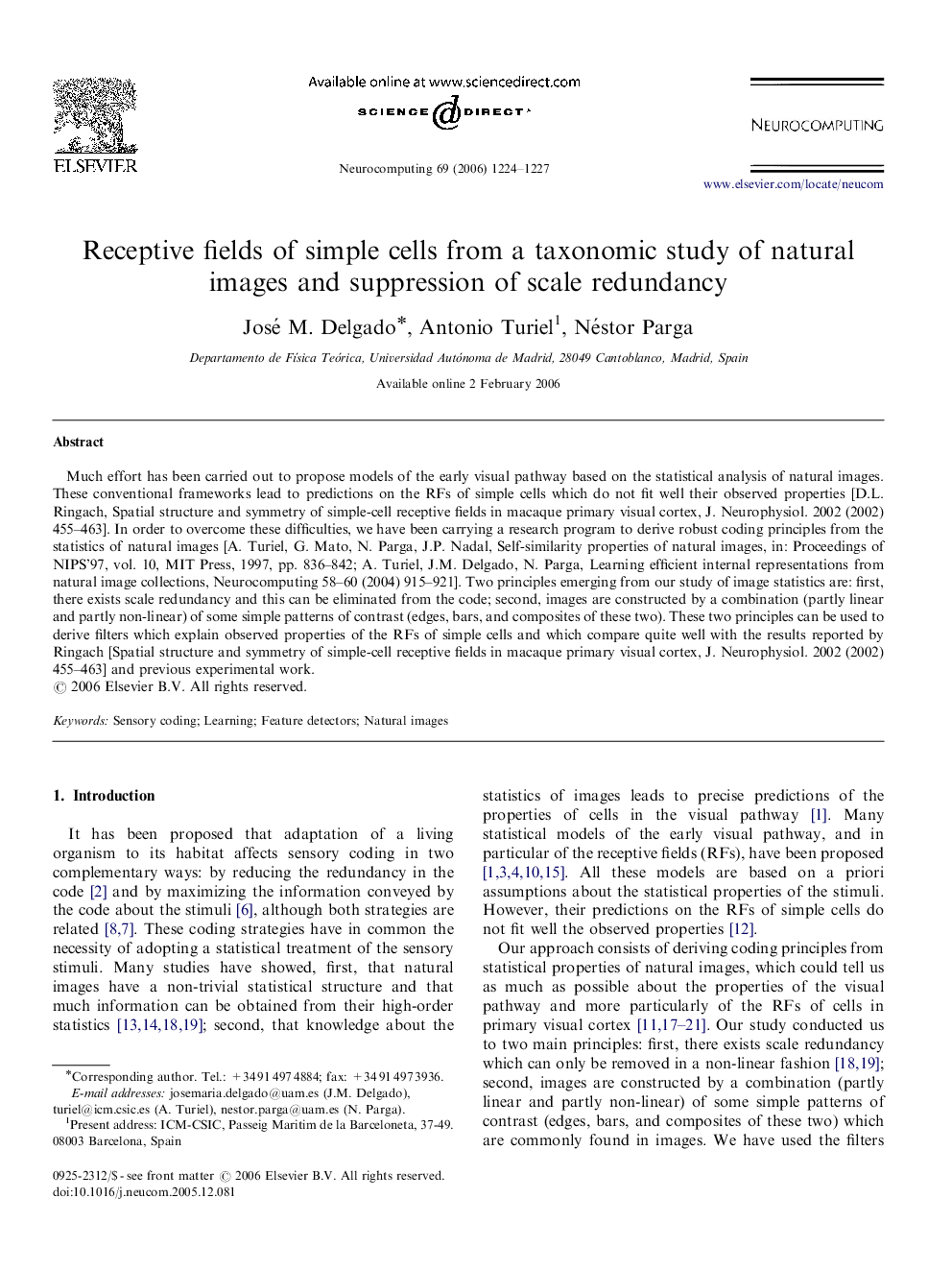| Article ID | Journal | Published Year | Pages | File Type |
|---|---|---|---|---|
| 408746 | Neurocomputing | 2006 | 4 Pages |
Much effort has been carried out to propose models of the early visual pathway based on the statistical analysis of natural images. These conventional frameworks lead to predictions on the RFs of simple cells which do not fit well their observed properties [D.L. Ringach, Spatial structure and symmetry of simple-cell receptive fields in macaque primary visual cortex, J. Neurophysiol. 2002 (2002) 455–463]. In order to overcome these difficulties, we have been carrying a research program to derive robust coding principles from the statistics of natural images [A. Turiel, G. Mato, N. Parga, J.P. Nadal, Self-similarity properties of natural images, in: Proceedings of NIPS’97, vol. 10, MIT Press, 1997, pp. 836–842; A. Turiel, J.M. Delgado, N. Parga, Learning efficient internal representations from natural image collections, Neurocomputing 58–60 (2004) 915–921]. Two principles emerging from our study of image statistics are: first, there exists scale redundancy and this can be eliminated from the code; second, images are constructed by a combination (partly linear and partly non-linear) of some simple patterns of contrast (edges, bars, and composites of these two). These two principles can be used to derive filters which explain observed properties of the RFs of simple cells and which compare quite well with the results reported by Ringach [Spatial structure and symmetry of simple-cell receptive fields in macaque primary visual cortex, J. Neurophysiol. 2002 (2002) 455–463] and previous experimental work.
